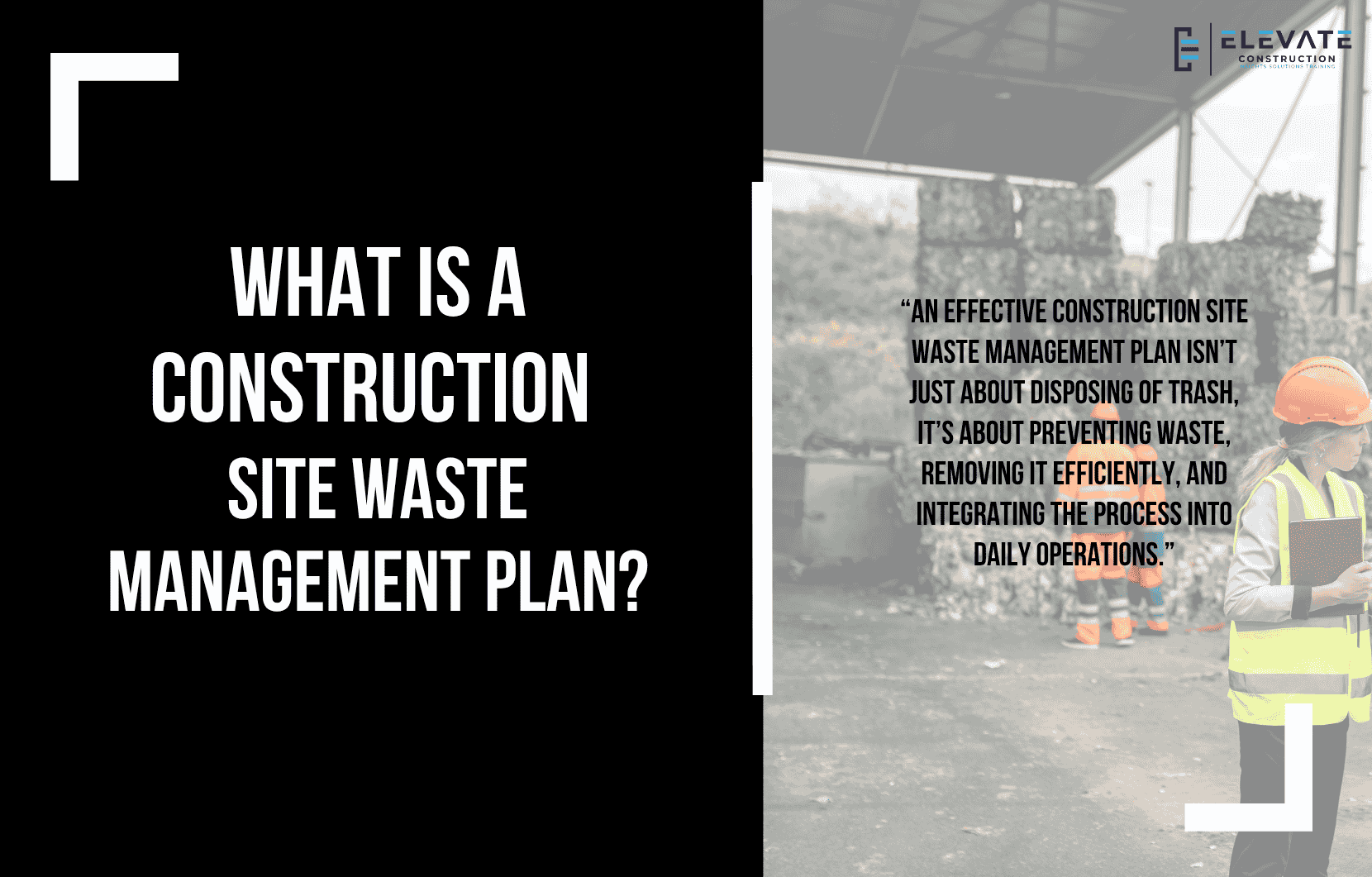Construction Site Waste Management Plans – A Complete Guide
What is a construction site waste management plan?
I covered this topic a long time ago, but after receiving new questions about it, I wanted to revisit it with a fresh perspective that can truly expand the way we think about waste on the jobsite.
This isn’t just about keeping things tidy, it’s about logistics, efficiency, safety, and schedule. Let’s break it down.
- What a Waste Management Plan Includes:
A proper waste management plan should go beyond “where the trash goes.” It should clearly define:
- What is waste vs. what is recyclable.
- Specific categories like steel recycling and how to handle proceeds from it.
- Locations for waste and recycling bins.
- Haul routes and hoisting plans for moving materials from work areas to disposal points.
- Strategies to prevent waste through pre-kitting, prefabrication, and modular building.
- Plans for reusing materials without overstocking inventory.
- Clear processes so workers and foremen can remove waste efficiently on a schedule, using Kanban or signal systems so dumpsters never overflow.
- Lessons from Experience:
I didn’t fully appreciate the importance of waste management until I experienced:
- Tight urban sites (like a zero-lot-line laboratory project) where we had to pre-cut and pre-kit materials to reduce waste by 20%, with efficient trash chutes and Kanban-based emptying schedules.
- Multifamily projects where the speed of production meant trash removal logistics became a major constraint.
- In these cases, scrapout units were essential.
- Waste removal needed to be scheduled and choreographed to keep the forklift and dumpsters from becoming bottlenecks.
Waste management isn’t just about disposal, it’s about maintaining production flow.
- Setting Up Waste Zones Without Slowing Production:
Many believe trades will move through a building only once. Reality says otherwise.
- First pass: Main production flow of trades.
- Second pass: Necessary to close up hoist areas, remove staging from floors, complete leaveout rooms, and handle scrapout units.
By planning for a secondary flow from the start and buying it out you ensure scrap removal doesn’t interfere with production.
- Who’s Responsible?
The General Contractor. Yes, lean principles encourage shared responsibility, but in practice:
- The top third of people will naturally buy in.
- The middle third will be neutral.
- The bottom third will resist until there’s a clear standard.
As GC, set the minimum standard:
- Zero tolerance for messy, unsafe, or disorganized sites.
- Follow hoist and scrapout schedules exactly.
- Enforce cleanliness and order while also supporting crews with the tools and environment they need to succeed.
Strict standards plus respect create a worksite people are proud to be on.
- How Waste Management Helps the Schedule:
Better waste management = better production flow.
Excess materials and waste create:
- Transportation waste.
- Excess inventory (which gets damaged).
- Defects that need fixing (overprocessing).
- Waiting due to blocked work areas.
Removing waste quickly keeps paths clear, reduces rework, and allows trades to operate at full speed.
- Building Waste Removal into Daily Routines:
Make waste removal part of the rhythm of the job:
- Kanban/signal systems to trigger removal.
- Scheduled emptying of trash cans, dumpsters, and scrapout units.
- Include waste removal planning in the afternoon foreman huddle.
- Keep it visible on the logistics plan.
This ensures waste removal happens proactively, not reactively.
Final Advice:
A remarkable waste management plan is:
- Planned in detail.
- Enforced consistently.
- Improved continuously using PDCA (Plan, Do, Check, Adjust).
Display the plan visually in your conference room, discuss it daily in huddles, and make it a part of your project’s culture.
Get waste out of the way, fast, clean, and on schedule and your entire project will benefit.
Key Takeaway:
An effective construction site waste management plan isn’t just about disposing of trash, it’s about preventing waste, removing it efficiently, and integrating the process into daily operations. When waste is minimized, well-coordinated, and quickly cleared from the site, production flows faster, safety improves, and the entire project runs more smoothly.
If you want to learn more we have:
-Takt Virtual Training: (Click here)
-Check out our Youtube channel for more info: (Click here)
-Listen to the Elevate Construction podcast: (Click here)
-Check out our training programs and certifications: (Click here)
-The Takt Book: (Click here)
Discover Jason’s Expertise:
Meet Jason Schroeder, the driving force behind Elevate Construction IST. As the company’s owner and principal consultant, he’s dedicated to taking construction to new heights. With a wealth of industry experience, he’s crafted the Field Engineer Boot Camp and Superintendent Boot Camp – intensive training programs engineered to cultivate top-tier leaders capable of steering their teams towards success. Jason’s vision? To expand his training initiatives across the nation, empowering construction firms to soar to unprecedented levels of excellence.
On we go

